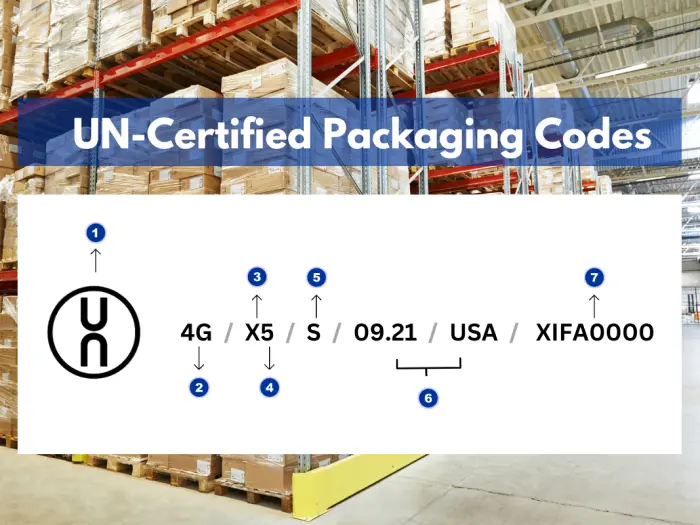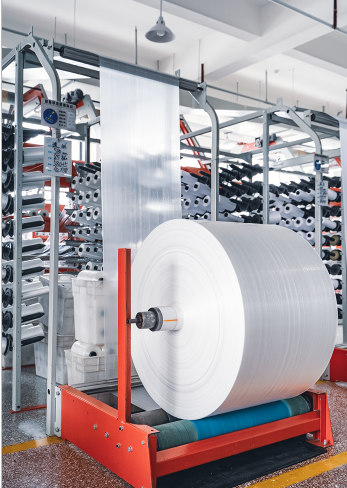When transporting hazardous materials, safety is paramount. One crucial element of safe transportation is the use of UN-certified packaging.
These packaging solutions are designed, tested, and certified to meet international standards that protect both the environment and public health.
This article explains the importance of UN-certified packaging, how to identify it, and the codes involved. Read on to learn more.
UN-certified packaging refers to containers that meet the rigorous requirements set by the United Nations for the safe transportation of dangerous goods.
The certification ensures that the packaging is robust enough to withstand the stresses of transportation, such as rough handling, stacking, and exposure to extreme weather conditions.
For companies handling hazardous materials, using UN-certified packaging is mandatory under national and international regulations.
Non-compliance can lead to legal consequences, delays, or safety hazards.
To determine if a package is UN-certified, you need to check for specific markings and codes, typically printed or embossed on the container.
These codes indicate the package’s certification and provide essential information about the container’s specifications, such as the type of material, hazard classification, and manufacturer details.
If a package (such as FIBC bags) lacks these markings, it is not certified and should not be used for transporting hazardous materials.
Using uncertified packaging increases the risk of leaks, spills, and accidents, which can harm people and the environment.

Understanding UN specification markings can be confusing at first glance. In this section, we’ll take a closer look at the meaning of each UN-certified packaging code.
The “UN” symbol is the first element of the code and denotes that the package meets United Nations certification standards for transporting dangerous goods.
Without this symbol, the package cannot be considered UN-certified.
The codes consist of numbers and letters that describe the type of packaging and the materials used to make it.
| Type of Container | Container Material | Container Packaging Head or Material Wall Type |
| 1 – Drums/Pails | A – Steel | For Drums: 1 – Closed Head (Non-Removable Head) 2 – Open Head (Removable Head) |
| 2 – Barrels | B – Aluminum | For Bags: 5M1 – Multiwall 5M2 – Multiwalled, Water-Resistant |
| 3 – Jerricans | C – Natural Wood | |
| 4 – Boxes | D – Plywood | |
| 5 – Bags | F – Reconstituted Wood | |
| 6 – Composite Packaging | G – Fiberboard | |
| 7 – Pressure Receptacle | H – Plastic | |
| L – Textile | ||
| M – Paper | ||
| N – Metal other than Steel or Aluminum | ||
| P – Glass, Porcelain or Stoneware |
Examples:
These codes help shippers select the right container for the type of hazardous material they are handling.
UN packaging is divided into three groups, based on the level of danger posed by the materials:
These group levels indicate the type of packaging required to transport materials based on their hazard classification.
For solids, the gross mass rating specifies the maximum allowable weight the container can hold.
For liquids, the specific gravity value indicates the relative density of the liquid, which affects the container’s structural requirements.
This figure represents the maximum internal pressure the container can handle for liquids.
Ensuring that containers can withstand specific pressure levels reduces the risk of rupture during transport.
The code includes the year of manufacture and the country where the packaging was produced.
This information helps trace the origin of the package and ensures accountability in case of issues during transport.
The code also contains the manufacturer’s identification or the testing agency that certified the package. This provides additional accountability and traceability.
Getting UN-certified packaging involves rigorous testing to ensure it meets international safety standards. These tests include:
Once these tests are successfully passed, the packaging can be labeled with a UN certification code.
Proper packaging for dangerous goods is vital for several reasons.
UN-certified packaging helps ensure safety, legal compliance, transportation efficiency, and risk management and protects the reputation of companies involved in shipping hazardous materials.
Here are 5 crucial reasons why UN-certified packaging is essential:
The most important reason for using UN-certified packaging is to ensure the safety of people, property, and the environment during transportation, storage, and recycling.
Hazardous materials like flammable liquids, toxic substances, and explosives can cause significant harm if not properly contained.
Certified packaging helps prevent leaks, spills, explosions, and other accidents that could result in injuries, property damage, or environmental contamination.
Shipping dangerous materials is heavily regulated by national and international authorities, such as the following:
These regulations are in place to protect public health and safety.
Failure to comply with packaging standards can lead to fines, legal liabilities, and disruptions in transportation operations.
Compliance with packaging regulations ensures that hazardous materials are transported smoothly.
Hazardous material packaging must be compatible with the mode of transport, whether by air, road, rail, or sea.
Using the right packaging reduces the risk of delays or rejections during transportation and ensures that materials arrive safely at their destination.
Using the correct packaging code minimizes the risks associated with transporting hazardous materials.
Proper containment and identification help emergency responders quickly assess and address incidents involving hazardous materials.
For example, in case of an accident, the packaging codes allow first responders to identify the nature of the hazard and take appropriate action.
Properly packaging hazardous materials also protects the reputation and liability of shippers, carriers, and others involved in the transportation process.
Compliance with UN regulations demonstrates responsibility and enhances a company’s reputation, while also reducing the risk of legal liabilities resulting from accidents or incidents.




